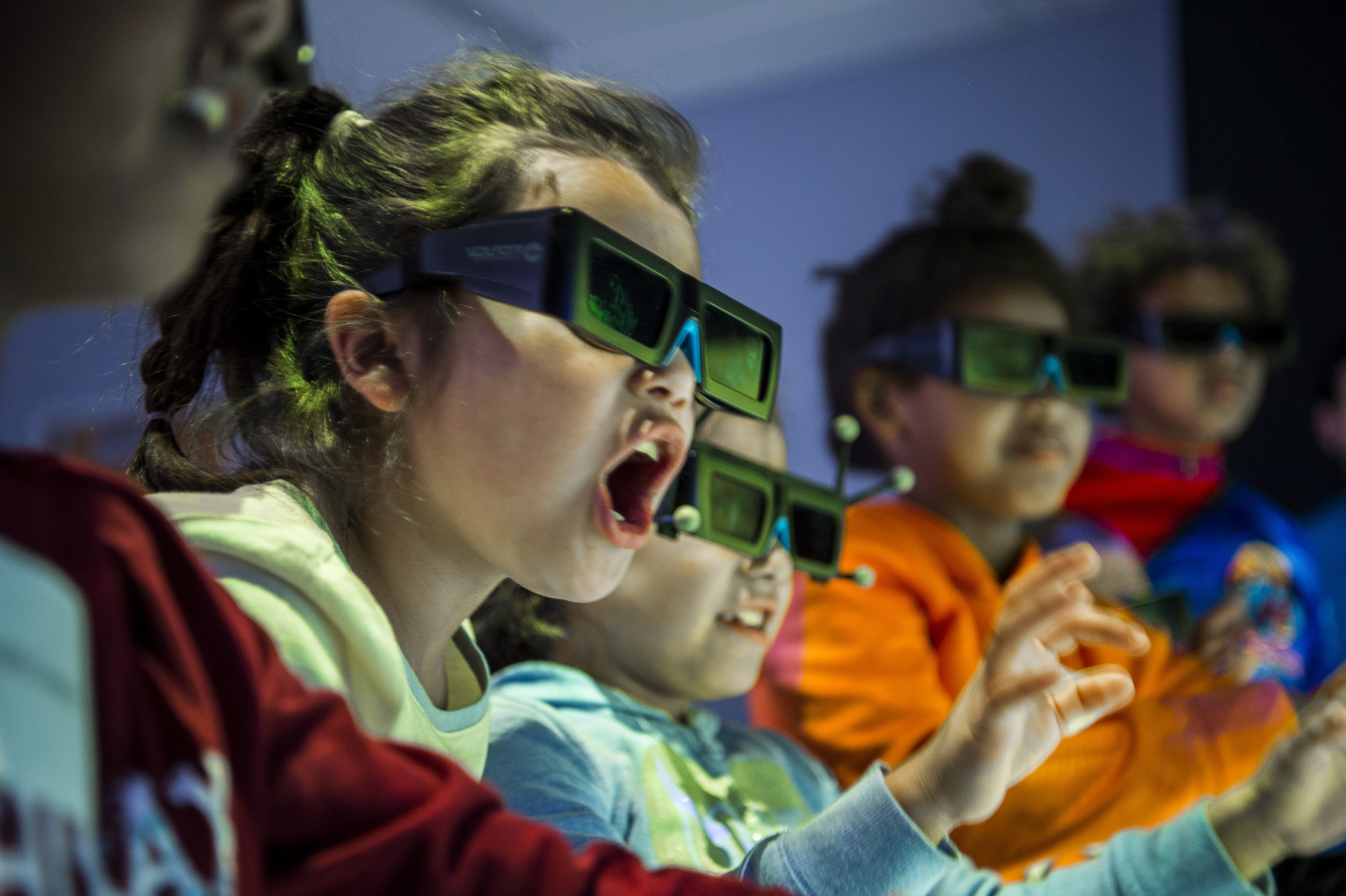Ten-year-old Leo worked in the Education Center at the National Renewable Energy Laboratory (NREL), fitting together snap-on electrical circuits. The boy from a Denver community center was enthralled by the sheer joy of adding buzzers, lights, and switches to the device. Sitting at a desk nearby, Rhielle carefully colored a drawing of a solar panel. “I want to be everything: a singer, waitress, scientist, baker—because baking is a science,” the eight-year-old explained. Everywhere, the room buzzed with energy, as 16 grade schoolers performed experiments and talked to volunteer researchers as part of a science, technology, engineering, and math (STEM) outreach connecting NREL with our local community.
It reminded me of my own start on the pathway of scientific discovery. As a high school student in Regensburg, Germany, I wondered about this exotic world of test tubes and microscopes—and so visited the office of a distinguished biologist in my hometown university. I asked if he would talk to me—but he was busy at the moment. Instead, this scientist invited me into his laboratory, where I saw first-hand some of his experiments. Later, we chatted and he gave me a basic college text.
He continued to follow me, and mentored me throughout my science studies. I’ve never forgotten that lesson about the importance of sharing science with younger minds. That is why I’m so enthusiastic about STEM learning, and support it passionately at NREL. Whenever we can engage younger students—especially those who may not have had a chance to consider science and engineering as careers—we are building our future.
Throughout the year, NREL actively engages in a range of STEM events. Last May, we held NREL’s 27th annual Junior Solar Sprint and Lithium-Ion (Li-ion) Battery Car Competitions on campus, attracting 53 teams from 18 Colorado middle schools. Maybe you’ve been to something like this. Some cars scoot, some fizzle—yet regardless of the finish, everyone gains hands-on experience. Likewise, we co-sponsored the 27th Colorado Science Bowl, giving kids a chance to test their knowledge against other aspiring young researchers. This year the Lambkins from Ft. Collins roared to victory, correctly answering a range of questions across the sciences. We were part of the first Energy Day Colorado this fall, giving academic awards to promising scholars.
Whenever we can, we try to open our doors to prospects. Hannah, a high school sophomore from Boulder, won an NREL-sponsored award at the Colorado Science and Engineering Fair. Sure, she’d already gotten a plaque made from a recycled solar panel and a stipend of $100 for a building cooling project—but we wanted to give her something more. So we arranged a campus tour so that she could talk to researchers in her field. She chatted happily, and afterwards declared, “This place is cool.” Although she has a ways to go, she was clear: because both science and NREL are now positively linked in her mind, she hopes to one day work at the lab. Now that would be cool.
Of course, we won’t know for years whether Hannah will come here, chose another national laboratory, or find a different path. Likewise, we can’t foresee whether Leo will become an electrical engineer or Rhielle seek a career as a chemist. But we do know that 3,688 students who have visited NREL this year, or gone to competitions we’ve run, have all gained exposure to STEM activities. We can’t tell immediately how much impact these encounters have had—although the smiles of students tell us a lot—but speaking from personal experience, we should be confident that this type of inspiration can last a lifetime and will build our future.

With STEM, the future is bright.
